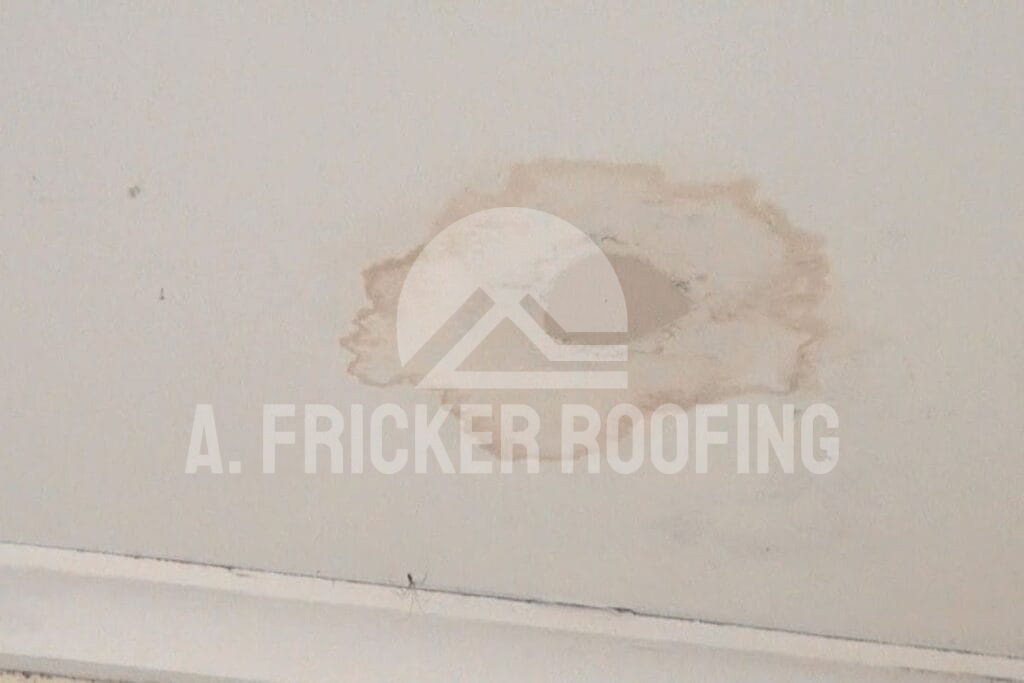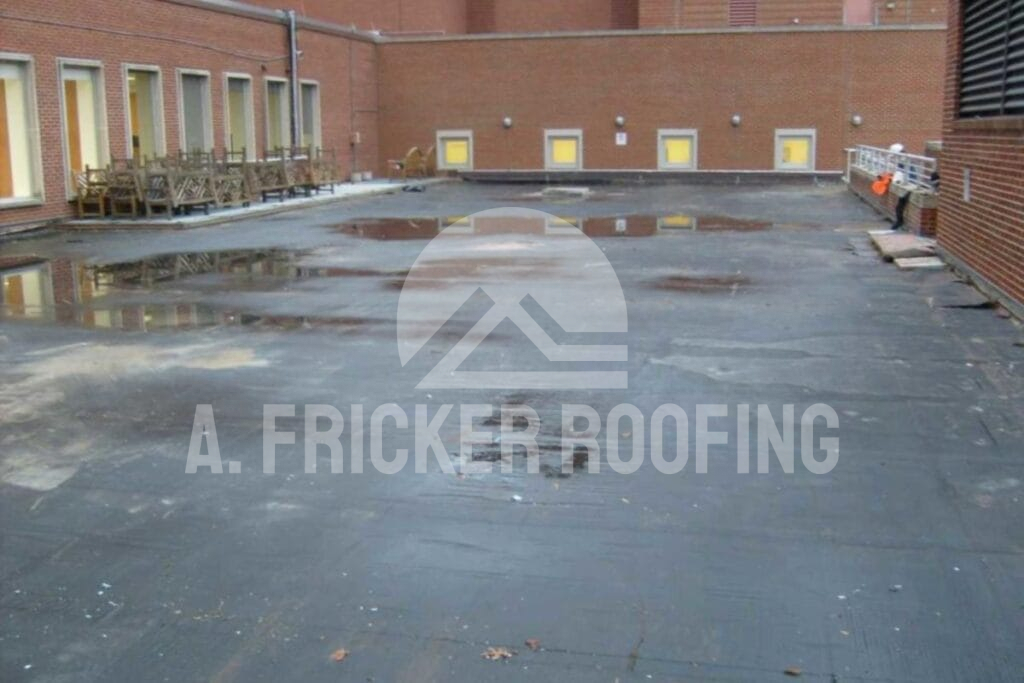Commercial properties are significant investments, and maintaining them is crucial for your business’s success. But one often overlooked yet important aspect is the roof. A leaky roof can lead to extensive damage, impacting both the structure of the building and the business operations within.
In this comprehensive guide, we’ll explore the top signs of commercial roof leaks and essential repair tips every business owner should be aware of. Whether you’re a seasoned property manager or a new business owner, understanding these key elements can save you from costly repairs and interruption to your daily operations.
Visible Signs Of Commercial Roof Leaks
Before getting into repairs, it’s crucial to understand the signs that your commercial roof is damaged.
1. Water Stains on Ceilings

Water stains on ceilings are a clear indicator of a potential roof leak. These stains often appear as discolored patches, ranging from light yellow to brown, and are usually accompanied by a water damaged or sagging ceiling. It’s essential to address these stains promptly, as they signify ongoing water seepage.
Ignoring water stains can lead to more significant issues, such as mold growth and compromised structural integrity. By identifying and addressing the source of the leak, property owners can prevent further damage to both the roof and the interior of their commercial space.
2. Deteriorated Roof Membrane

Commercial roofs are constantly exposed to all types of weather and UV radiation, which can prematurely age the commercial roof membrane. Some of the visible signs of deterioration include cracks, blisters, or punctures in the membrane.
A deteriorated roof membrane can lead to extensive water damage and compromise the overall effectiveness of the roofing system. Timely repairs, including patching or replacing damaged sections of the membrane, are crucial for maintaining the roof’s integrity.
3. Pooling Water on the Roof

Flat or low slope commercial roofs are susceptible to pooling water after rainfall. If water is not draining properly, it can lead to premature deterioration of the roofing materials over time. Pooled water also creates additional weight on the roof, potentially causing structural issues and an increased risk of leaks.
Addressing pooling water involves improving the roof’s drainage system. If you ignore this issue, it can result in accelerated wear, leaks, and other structural problems. Proper drainage is essential for the longevity of your commercial roofing system.
3 Different Ways to Repair Commercial Roof Leaks
It’s important to address commercial roof leaks swiftly and effectively to prevent further damage and protect the integrity of the building. Here are the top three ways to repair commercial roof leaks:
1. Seal Leaks and Punctures
If you find a leak, sealing it is one of the easiest ways to repair the area. There are many types of commercial roofing sealants available, so make sure you choose one that is compatible with your roofing material. It’s important to follow the manufacturer’s instructions for a seamless application. Any delay in repairing the roof may result in more commercial roof problems.
How To Seal Commercial Roof Leaks
By following these steps, you can successfully patch the leak in your commercial roof.
1. Identify the Source of the Leak
Before diving into the sealing process, conduct a thorough inspection to pinpoint the source of the leak. This involves examining the interior for water stains and the exterior for visible damage.
2. Clean and Prepare the Surface
After you have found the origin of the leak, clean and prepare the area. Use a broom to remove dirt, leaves, and any other materials that might compromise the adhesion of the sealant.
3. Choose the Right Sealant
Different roofing materials may require specific types of sealants. Whether your roof is made of metal, EPDM, or any other rubber material, select a sealant compatible with it. This ensures proper adhesion and longevity of the repair.
Consider the specific properties of the sealant, such as flexibility, durability, and resistance to UV rays. These factors contribute to the effectiveness of the seal and its ability to withstand varying weather conditions.
4. Apply the Sealant
Carefully read and follow the manufacturer’s instructions for the selected sealant. Different sealants may have specific application methods and drying times. Adhering to these guidelines ensures a proper and lasting seal.
Apply the sealant using tools appropriate for the job, such as a brush, roller, or caulk gun. The tools you use may vary depending on the roof and sealant type.
If the cause of the leak is relatively minor, using a sealant is an effective way to repair the area.
2. Replace Damaged Roofing Materials
If worn out or punctured roofing materials are the cause of the roof leak, it might be best to replace them. This usually involves the complete removal and replacement of the parts of the membrane or other roofing components. Follow the manufacturer guidelines for proper removal and installation of the new roofing membrane.
How To Replace A Damaged Roofing Membrane
Here is a step by step guide to replacing a damaged roofing membrane:
1. Gather the Necessary Tools and Materials
To replace the damaged area, you’ll need the following tools:
- Safety gear including gloves and safety glasses
- Roofing tools like a roofing hammer or pry bar
- Replacement roofing materials including a membrane patch and flashing, if necessary
- Nails and roofing adhesive
2. Clean and Prepare the Area
Clear the area of any debris, nails, or loose materials. A clean surface is crucial for the proper installation of the replacement roofing material.
3. Remove Damaged Roofing Material
Using the proper tools, carefully remove the damaged roofing material. Take extra care to avoid causing additional damage to surrounding materials. If the damaged section is larger, you may need to cut it away using a utility knife.
Inspect the substrate beneath the removed material for any signs of damage. Ensure that the underlying structure is in good condition before proceeding with the replacement.
4. Install Replacement Material
Cut the replacement roofing material to fit the dimensions of the removed section. Ensure a precise fit to maintain the integrity of the roof. For membrane patches, apply a roofing adhesive to ensure a watertight seal.
Secure the replacement material in place using roofing nails or adhesive, depending on the type of roofing material. Follow manufacturer guidelines for the specific material being used.
5. Seal Joints and Edges
To prevent water infiltration, apply a layer of roofing sealant along the joints and edges of the replacement material. This additional barrier enhances the watertight seal and reinforces the repair.
If you are unsure about any of the process, it’s best to call a professional roofing contractor for help.
3. Improve Roof Drainage
Flat roofs are more susceptible to pooling water, which is one of the main causes of leaks. Addressing this requires improving the roof’s drainage system. Ensure that gutters, downspouts, and other drainage elements are clear of debris and properly channel water away from the roof.
Also Read: 7 Business Practices For Commercial Roof Maintenance
Ways To Improve Your Commercial Roof Drainage System
Sufficient drainage can extend the lifespan of a commercial roofing system by reducing the risk of water damage and leaks.

1. Invest in Quality Gutters and Downspouts
Choosing high quality gutters and downspouts is essential for an effective drainage system. Opt for materials that are durable and resistant to corrosion, ensuring longevity and minimal maintenance. Additionally, consider the size and capacity of the gutters to handle the volume of water in your specific area.
2. Proper Slope and Installation
Ensure that your roof has the correct slope to facilitate water runoff. An improper slope can lead to water pooling, increasing the risk of leaks. During installation, pay attention to the placement of gutters and downspouts and ensure they direct water away from the foundation and vulnerable areas of the roof.
3. Install Roof Drains and Scuppers

Incorporating roof drains and scuppers can significantly enhance your commercial roof’s drainage capabilities. These features provide additional pathways for water to exit the roof, reducing the likelihood of standing water and leaks.
Maintenance Tips To Prevent Commercial Roof Leaks
Here are some ways to prevent leaks on your commercial roof:
1. Regularly Inspect Your Roof
Schedule routine inspections with a qualified roofing professional. This proactive approach allows for the early detection of potential issues such as damaged membranes, loose flashing, or clogged drainage systems.
2. Address Ponding Water
Ponding water is a common culprit behind commercial roof leaks. Ensure that your roof is designed with proper drainage slopes to prevent water from pooling. Address any low spots or sagging areas promptly, as they can lead to standing water and, eventually, leaks.
3. Clear Debris
Regularly remove debris, such as leaves, branches, and dirt, from the roof surface and gutters. Accumulated debris can clog drainage systems, impede water flow, and contribute to leaks. Pay special attention to areas around rooftop equipment, as they are prone to debris buildup.
4. Check Flashing and Seals
Inspect the flashing around roof penetrations, such as vents, chimneys, and HVAC units. Damaged or deteriorated flashing can allow water to seep into the building. Replace any compromised flashing promptly and ensure that all seals are intact.
Conclusion
Proactive maintenance is necessary to prevent commercial roof leaks. Being aware of the signs and addressing them promptly can save your business from costly repairs and potential day to day interruptions.
Hire Professional Roofers In Tulsa To Repair Your Commercial Roof Leaks
If you notice the signs of leaks on your commercial roof, don’t hesitate to call A. Fricker Roofing and Waterproofing. It’s recommended to repair commercial roofs as soon as possible, as any delay can lead to further damage and extensive repairs. Call A. Fricker Roofing and Waterproofing today at (918) 402-7167 to schedule your commercial roof repairs.

